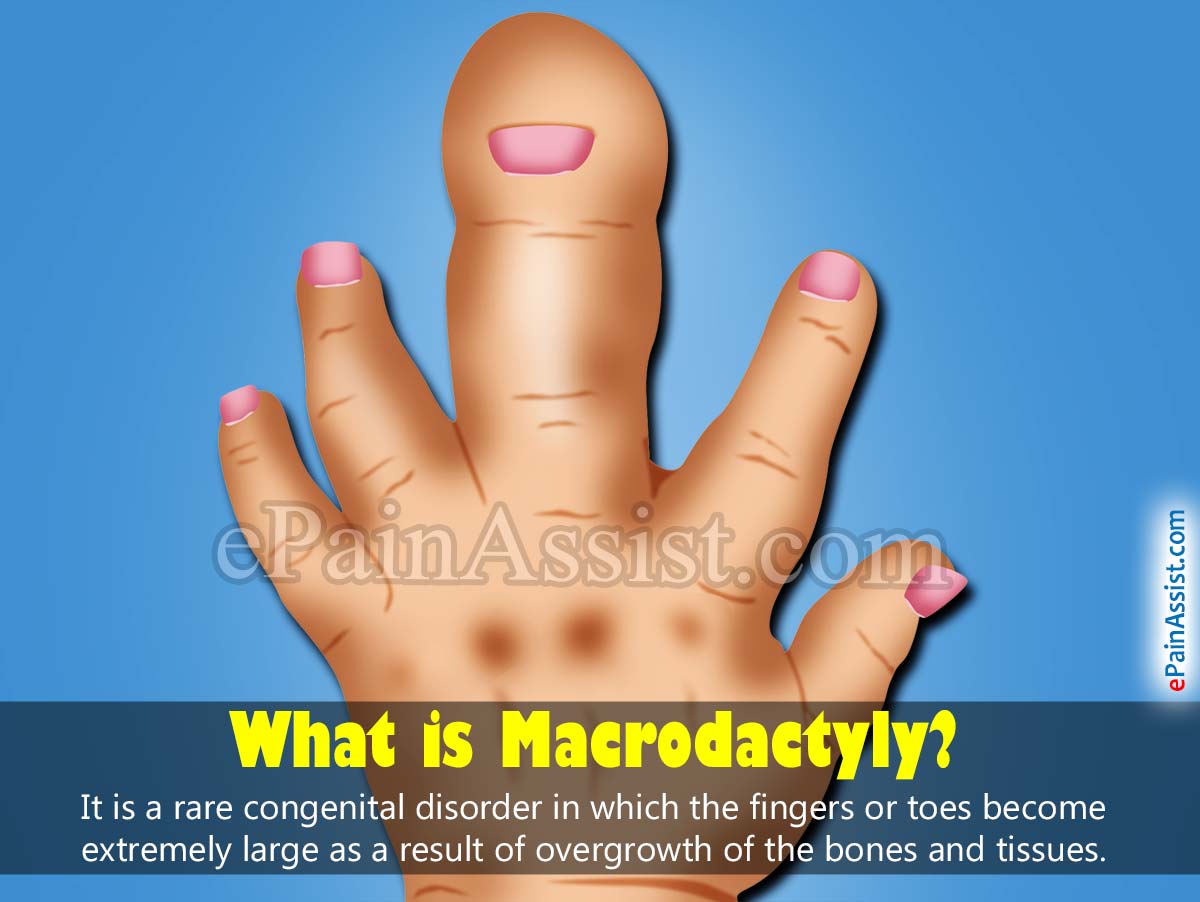What is Macrodactyly?
Macrodactyly is a rare congenital disorder in which the fingers or toes become extremely large as a result of overgrowth of the bones and tissues.1 As this condition is congenital, a child is born with it. Macrodactyly normally is present in the hands than the toes. In majority of cases, this condition is unilateral which means only one hand or foot is affected but in some cases it is seen bilaterally as well. Macrodactyly is seen to occur in the presence of another similar condition called syndactyly in which two fingers or toes are joined together at the time of birth. Macrodactyly is a benign condition but can be a factor of displeasure due to cosmetic reasons. This condition generally is treated surgically.

What is the Cause of Macrodactyly?
There is no root cause found as of yet for Macrodactyly.2 It definitely does not occur due to anything done by the mother during pregnancy. Macrodactyly is not an inherited disorder. Macrodactyly seems to occur in conjunction with some other congenital conditions to include neurofibromatosis, vascular abnormalities, tuberous sclerosis etc.
What are the Symptoms of Macrodactyly?
The defining characteristic of Macrodactyly is that one or more of the child’s fingers or toes are abnormally large than the other fingers or toes. If a child has Macrodactyly, then it does not mean that the affected finger or toe will not grow, in fact the affected finger or toe also grows in the same way as other fingers and toes of the child, although the affected fingers or toes may grow faster than the normal fingers or toes. If the condition progressively worsens then the affected finger or toe will become gigantically large compared to the static condition in which the affected finger or toe is about two times larger than the normal finger or toe.
How is Macrodactyly Diagnosed?
Macrodactyly is a visible deformity and can be observed immediately after birth of the child. In some cases there may not be much difference seen between the size of the affected finger or toe than the remainder of the fingers or toes but as the child grows there may be a striking difference due to progressive state of the disease condition. The following tests will be conducted to identify which tissues or bones are affected and enlarged:
- X-rays of the affected area
- MRI scan of the affected area.3
How is Macrodactyly Treated?
The goal of the treatment for Macrodactyly is to provide maximal function of the affected hand or toe. The treatment modalities differ for the hands and foot. The function of the hand may not be affected if a finger is enlarged however if the toe is enlarged then wearing shoes becomes difficult. For mild cases of Macrodactyly, for the fingers no specific treatment is required and for the foot treatment may involve shoe wear modifications in the form of shoes with a wider toe box. In cases where the condition is quite severe, then the route for treatment is surgery. The surgical procedure is quite complicated as it usually involves multiple layers of tissue and may require more than one procedure to correct the deformity. The surgical procedure will have to be planned precisely keeping in mind the growth rate of the fingers which will involve close observation. Some of the surgical procedures done for correction of Macrodactyly are:
Soft Tissue Debulking: In this procedure, the thickened layers of the skin and soft tissues are removed and replaced with healthy skin from some other area of the body. This is generally a staged procedure and is done about 10 to 12 weeks apart. This procedure is used to treat mild but progressive forms of Macrodactyly.
Shortening Procedure: In this procedure, a removal of one of the phalanges in the hand or toe or removal of the metacarpal or metatarsal bone is done.
Ray Resection: In this procedure, a complete removal of the affected digit or digits is done especially if the condition is progressive. This procedure is done if the above two procedures described are not effective.
What is the Prognosis of Macrodactyly?
The overall prognosis of the child suffering from Macrodactyly varies from case to case depending on the severity of the condition. Post surgery, there may be a significant improvement in the overall appearance of the affected finger or toe but the child may still be left with some sort of deformity and still be left with some dysfunction of the affected region as a result of Macrodactyly.
